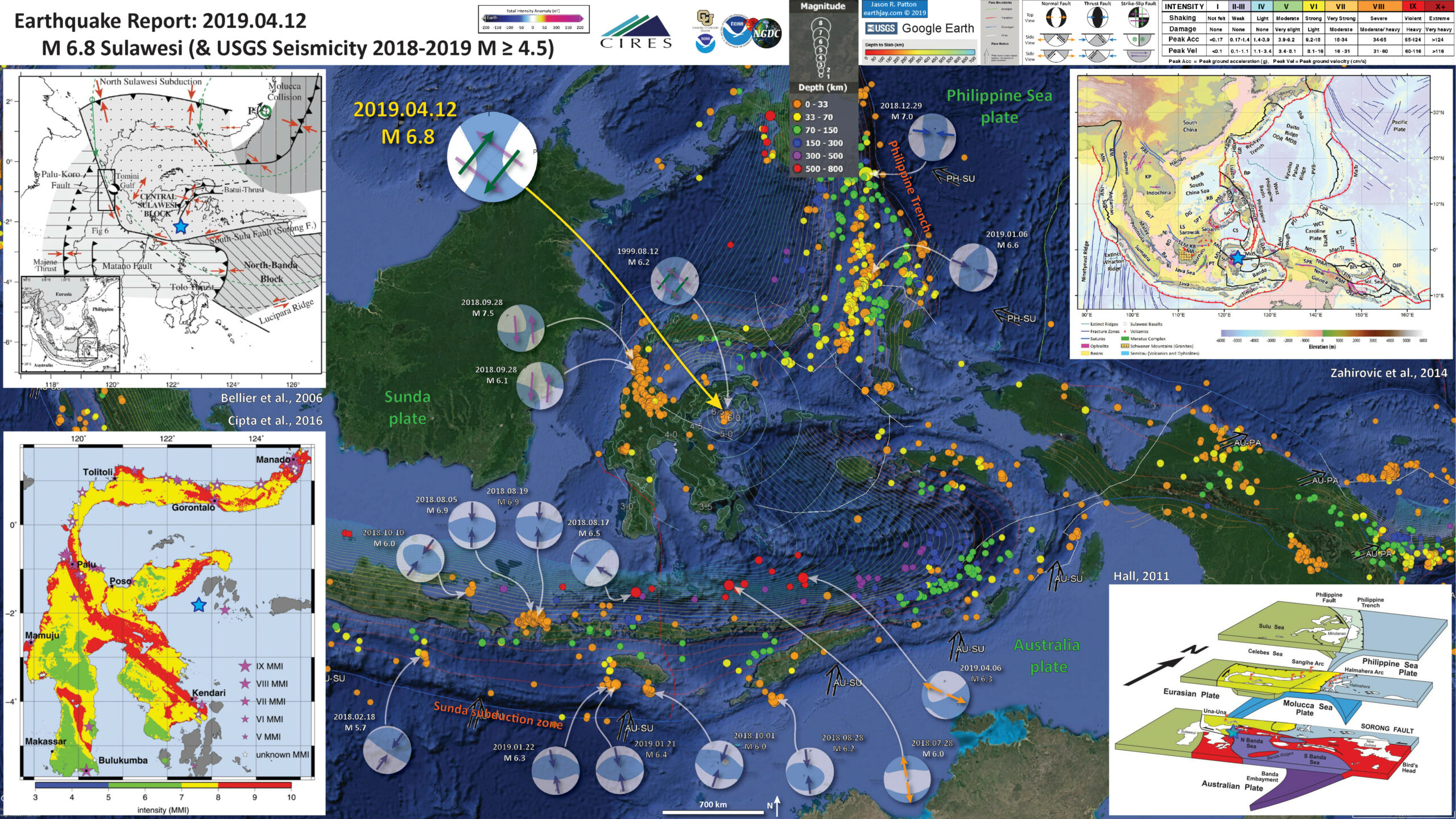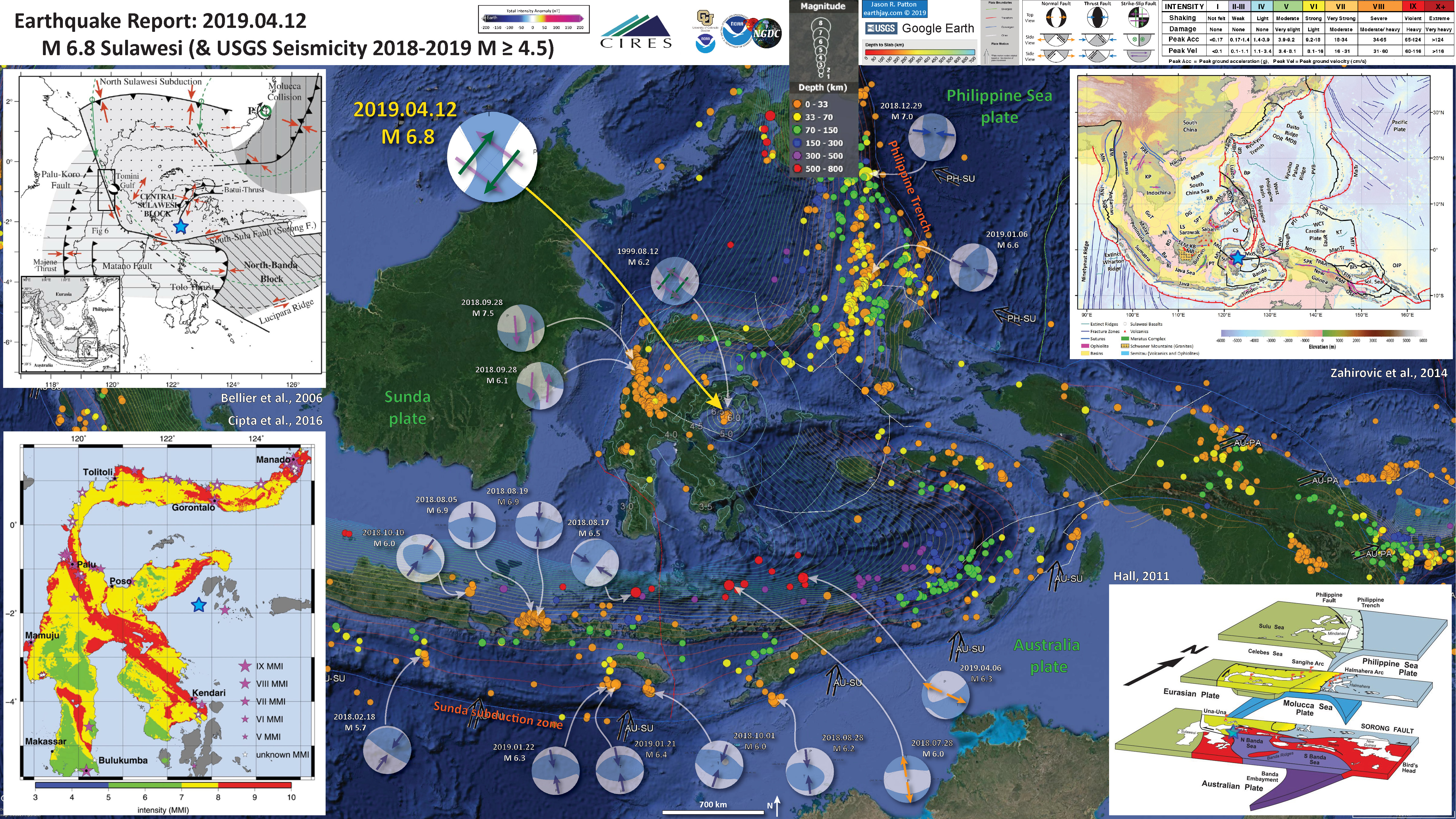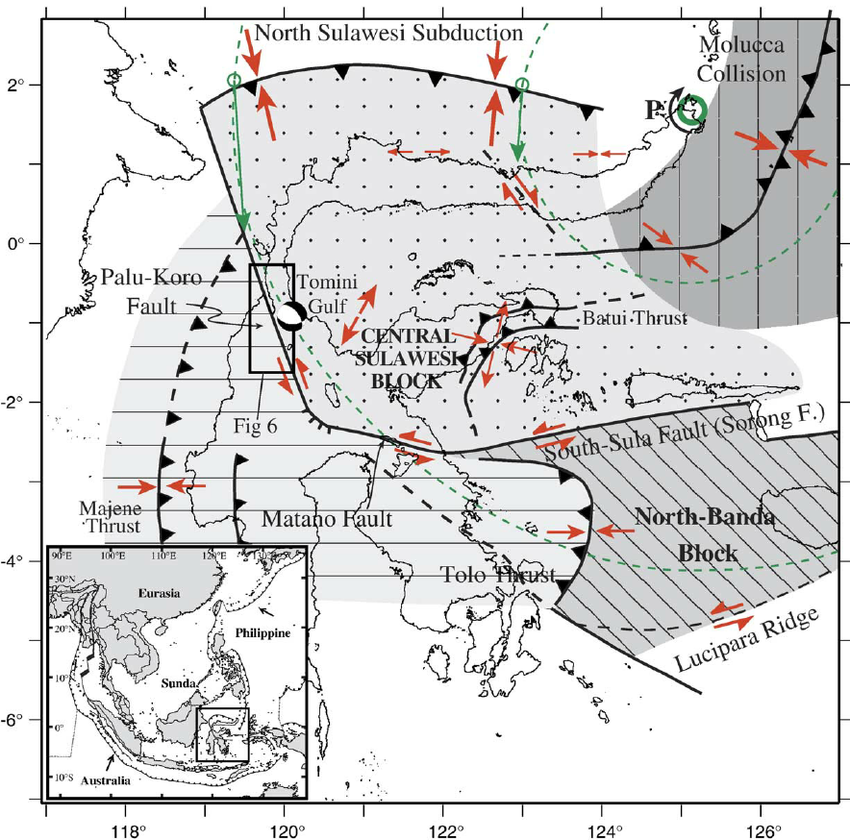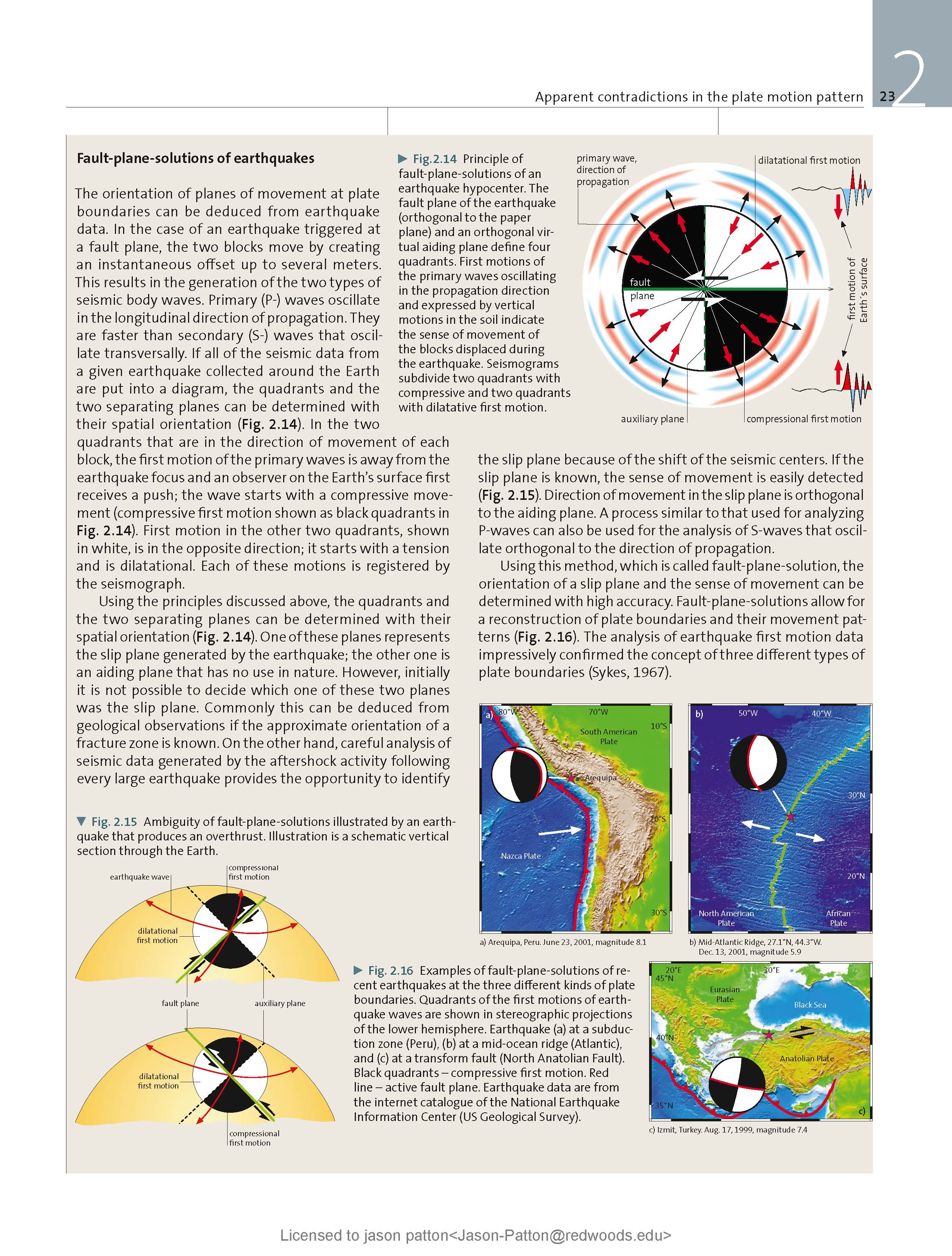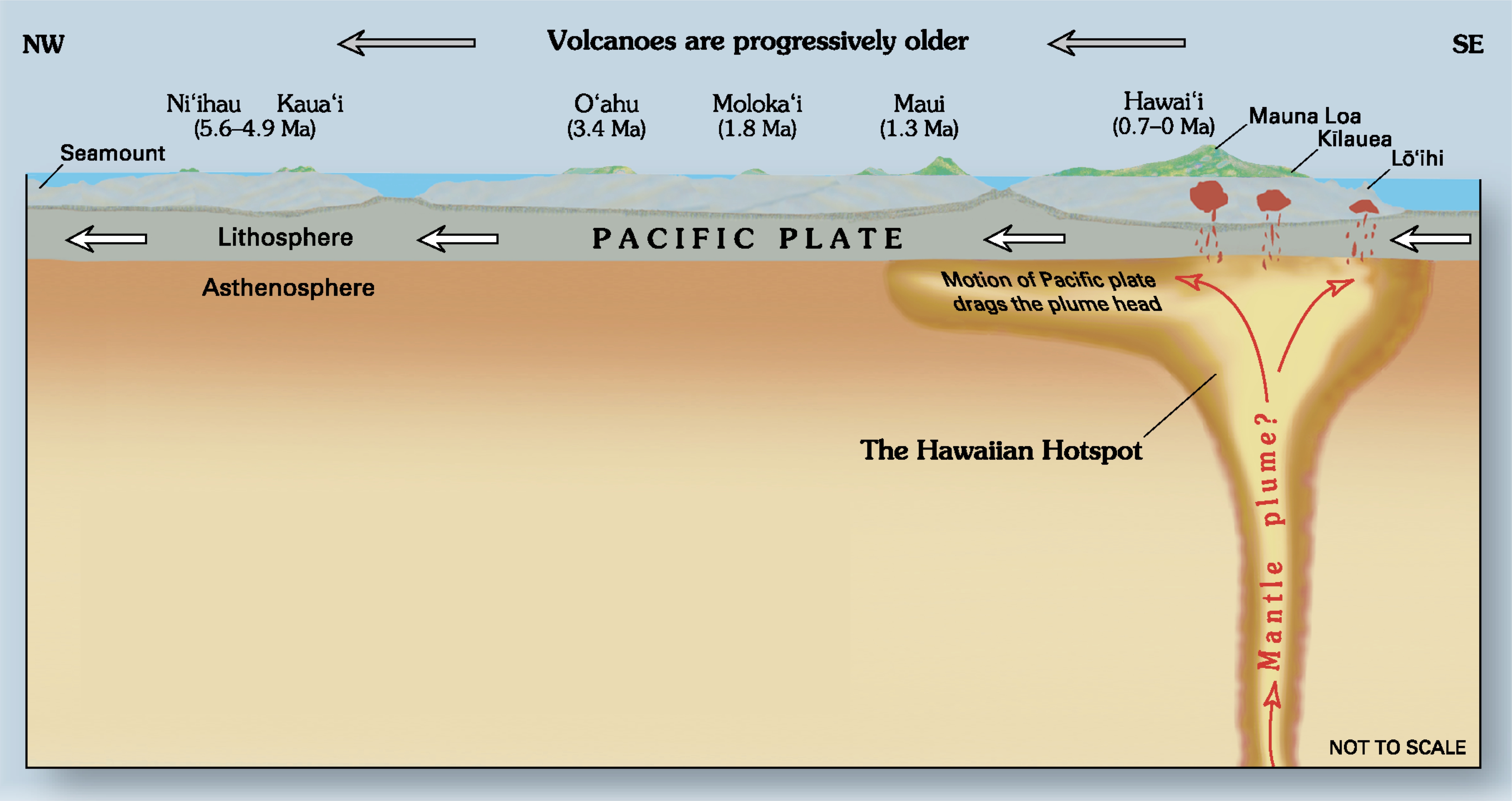Today I awoke to the USGS earthquake notification service email about an earthquake offshore of Sulawesi, Indonesia. There was an earthquake with a magnitude M 6.8 to the southeast of the Donggala/Palu earthquake from 28 September 2018. Here is the comprehensive earthquake report for the Donggala/Palu earthquake, landslides, and tsunami.
https://earthquake.usgs.gov/earthquakes/eventpage/us700034xq/executive
Just like the September quake, today’s event was a strike-slip earthquake, where the crust moves side-by-side (like the San Andreas fault).
This region of the world is complicated and special. There are subduction zone and transform plate boundaries. I use several maps below to present how these plate boundaries control the types of earthquakes. First I plot the earthquakes from the past year, then for the past century. Of course, let’s remember that seismometers are not that old, so the first half of the 20th century, there were not many seismometers. So, the earthquake record before the 1950s is generally composed of earthquakes with larger magnitude.
There are many many faults in this region, overlapping each other, offsetting each other. And, there have been earthquakes along many of these systems over the past year and past century that represent these different systems and how they interact.
- The bivergent convergent zone of the Molucca Strait trends towards Sulawesi from the north.
- The strike-slip Sorong fault (on north side of Papua New Guinea) enters the region from the east.
- The Sorong fault goes through Sulawesi, forming the Palu-Koro fault, responsible for the Donggala/Palu earthquake, landslides, and tsunami happened last year. There was an interesting earthquake along this transition in Sulawesi on 29 May 2017. This earthquake may have triggered the Donggala/Palu earthquake due to changes in static coulomb stress (though nobody has done those analyses yet, as far as I know).
- To the south is the convergent plate boundary between the Australia and Sunda plates. There was a sequence of earthquakes on a backthrust (the Flores thrust fault) to this subduction zone last year. This subduction/collision zone extends westwards and joins the Alpide belt, the longest convergent plate boundary on earth. Most notably, this plate boundary was responsible for the 2004 Sumatra-Andaman subduction zone earthquake.
The M 6.8 temblor is strange because it is oriented in a way that is different from the mapped faults in the region. The mainshock/aftershock sequence suggests a northeast-southwest oriented fault (making this a right-lateral strike slip earthquake). The mapped faults with this orientation are instead left-lateral faults.
Below is my interpretive poster for this earthquake
I plot the seismicity from the past month, with color representing depth and diameter representing magnitude (see legend). I include earthquake epicenters from 1918-2018 with magnitudes M ≥ 4.5 and M ≥ 7.5 in different versions.
I plot the USGS fault plane solutions (moment tensors in blue and focal mechanisms in orange), possibly in addition to some relevant historic earthquakes.
- I placed a moment tensor / focal mechanism legend on the poster. There is more material from the USGS web sites about moment tensors and focal mechanisms (the beach ball symbols). Both moment tensors and focal mechanisms are solutions to seismologic data that reveal two possible interpretations for fault orientation and sense of motion. One must use other information, like the regional tectonics, to interpret which of the two possibilities is more likely.
- I also include the shaking intensity contours on the map. These use the Modified Mercalli Intensity Scale (MMI; see the legend on the map). This is based upon a computer model estimate of ground motions, different from the “Did You Feel It?” estimate of ground motions that is actually based on real observations. The MMI is a qualitative measure of shaking intensity. More on the MMI scale can be found here and here. This is based upon a computer model estimate of ground motions, different from the “Did You Feel It?” estimate of ground motions that is actually based on real observations.
- I include the slab 2.0 contours plotted (Hayes, 2018), which are contours that represent the depth to the subduction zone fault. These are mostly based upon seismicity. The depths of the earthquakes have considerable error and do not all occur along the subduction zone faults, so these slab contours are simply the best estimate for the location of the fault.
- In the M 7.5 map below, I include a transparent overlay of the magnetic anomaly data from EMAG2 (Meyer et al., 2017). As oceanic crust is formed, it inherits the magnetic field at the time. At different points through time, the magnetic polarity (north vs. south) flips, the North Pole becomes the South Pole. These changes in polarity can be seen when measuring the magnetic field above oceanic plates. This is one of the fundamental evidences for plate spreading at oceanic spreading ridges (like the Gorda rise).
- Regions with magnetic fields aligned like today’s magnetic polarity are colored red in the EMAG2 data, while reversed polarity regions are colored blue. Regions of intermediate magnetic field are colored light purple.
- We can see the roughly east-west trends of these red and blue stripes. These lines are parallel to the ocean spreading ridges from where they were formed.
Magnetic Anomalies
- In the upper right corner is an overview map from Zahirovic et al. (2014) that shows the major plate boundary faults and tectonic plates. I placed a blue star in the general location of yesterday’s M 6.8 temblor.
- The map in the upper left corner shows one interpretation of these faults as presented by Bellier et al. (2006). The M 6.8 quake happened somewhere in the intersection of the Batui thrust (an extension of the Molucca Collision) and the Sorong fault. There are half a dozen different interpretations for the tectonics here, this is but one.
- The map in the lower left corner is a map from Cipta et a. (2006) that shows the relative seismic hazard for Sulawesi. Compare this map with the Bellier map above. Note how the seismic hazard is directly related to the known earthquake faults.
- In the lower right corner is a low-angle oblique view of the plates and their boundaries in this part of the world (Hall, 2011). I present this figure alone below to highlight the details of how these faults interact near the M 6.8 quake.
I include some inset figures. Some of the same figures are located in different places on the larger scale map below.
- Here is the map with a year’s seismicity plotted for quakes M ≥ 4.5.
- Earthquakes from the past year represent well many of the plate boundaries here. Notably is the Donggala/Palu sequence, with all the aftershocks, that align with the trend of the Palu-Koro fault as it connects to the south tot he Sorong fault system.
- There are several quakes along the Java trench (the Sunda subduction zone), showing thrust quakes (e.g. 2.18, 8.28, and 10.1 in 2018 and 1.21 and 1.22 in 2019). The Lombok sequence of 2018 is also evidence of this north-south convergence.
- As the Australia plate dives deep beneath the Sunda plate, the slab (the oceanic crust) pulls downwards, causing extension. The 2018.07.28 M 6.0 and 2019.04.06 normal fault earthquakes (orange arrows) are great examples of this. Intermediate depth earthquakes are not completely understood, but we learn more every year. For example, sometimes there are compressional quakes (thrust/reverse) that happen at these depths, e.g. the 2018.08.17 M 6.5 quake.
- One of the more active regions is the Molucca Strait, where there are subduction/convergent zones that oppose each other. The 2019.01.06 M 6.6 shaker is a good example of what can happen here (and does rather frequently).
- Further north is the subduction zone that forms the Philippine trench. There was a M 7.0 earthquake on 2018.12.29 that shows evidence of the subduction zone megathrust.
- Here is the map with a century’s seismicity plotted for quakes M ≥ 7.5.
- The USGS earthquake catalog includes additional examples of larger quakes over the past century that represent the range of plate boundary types in the region. The global earthquake catalog is better after 1950 due to the increase in seismic monitoring during the cold war (monitoring for nuclear weapons testing).
- Evidence for subduction along the Sunda subduction zone include subduction zone earthquakes (1977.08.19 M 8.3, 1994.06.02 M 7.8). Also, evidence for down-dip slab-pull extension as evidenced by the 1996.06.17 M 7.9 temblor. similar to the 2018 Lombok sequence, there are also examples of the backthrust to the subduction zone (e.g. 1992.12.12 M 7.8 and 2004.11.11 M 7.5).
- The Molucca Strait thrust earthquakes are evidence for this bivergent convergence (e.g. 1986.08.14 M 7.5 and 2007.01.21 M 7.5).
- There is also a subduction zone on the north side of Sulawesi, with several good example earthquakes (e.g. 1990.04.18 M 7.5, 1991.06.20 M 7.5, and 1996.01.01 M 7.9, which was tsunamigenic).
- There was a strike-slip earthquake on 1998.11.29 that is related to the Sorong fault system, a magnitude M 7.7 shaker.
Other Report Pages
Some Relevant Discussion and Figures
- This is the small scale tectonic map of the region (Zahirovic et al., 2014). This gives us the overview we need so we can understand the wide variety of plate boundary faults and how they interact with each other.
Regional tectonic setting with plate boundaries (MORs/transforms = black, subduction zones = teethed red) from Bird (2003) and ophiolite belts representing sutures modified from Hutchison (1975) and Baldwin et al. (2012). West Sulawesi basalts are from Polvé et al. (1997), fracture zones are from Matthews et al. (2011) and basin outlines are from Hearn et al. (2003). ANI – Andaman and Nicobar Islands, BD– Billiton Depression, Ba – Bangka Island, BI – Belitung (Billiton) Island, BiS – Bismarck Sea, BP – Benham Plateau, CaR – Caroline Ridge, CS – Celebes Sea, DG– Dangerous Grounds, EauR – Eauripik Ridge, FIN – Finisterre Terrane, GoT – Gulf of Thailand, GR– Gagua Ridge, HAL– Halmahera, HBa – Huatung Basin, KB–Ketungau Basin, KP – Khorat Platform, KT – Kiilsgaard Trough, LS – Luconia Shoals, MacB – Macclesfield Bank, ManTr – Manus Trench, MaTr – Mariana Trench, MB– Melawi Basin, MDB– Minami Daito Basin, MG– Mangkalihat, MIN – Mindoro, MN– Mawgyi Nappe, MoS – Molucca Sea, MS– Makassar Straits, MTr – Mussau Trench, NGTr – New Guinea Trench, NI – Natuna Islands, ODR– Oki Daito Ridge, OJP –Ontong Java Plateau, OSF – Owen Stanley Fault, PAL – Palawan, PhF – Philippine Fault, PT – Paternoster Platform, PTr – Palau Trench, PVB – Parece Vela Basin, RB – Reed Bank, RMF– Ramu-Markham Fault, RRF – Red River fault, SEM– Semitau, ShB – Shikoku Basin, Sol. Sea – Solomon Sea, SPK – Sepik, SPT – abah–Palawan Trough, STr – Sorol Trough, Sul – Sulawesi, SuS – Sulu Sea, TPAA– Torricelli–Prince Alexander Arc, WB–West Burma, WCT–W Caroline Trough, YTr –Yap Trough.
- Here is the tectonic map from Bellier et al., 2006. I include their caption below in blockquote. Note how the Molluca Collision faults trend towards the Batui thrust. However, when we look more closely at the faulting on a local scale, things get much more complicated.
Regional geodynamic sketch that presents the present day deformation model of Sulawesi area (after Beaudouin et al., 2003) and four main deformation systems around the Central Sulawesi block, highlighting the tectonic complexity of Sulawesi. Approximate location of the Central Sulawesi block rotation pole (P) [compatible with both GPS measurements (Walpersdorf et al., 1998a) and earthquake moment tensor analyses (Beaudouin et al., 2003)], as well as the major active structures are reported. Central Sulawesi Fault System (CSFS) is formed by the Palu–Koro and Matano faults. Arrows correspond to the compression and/or extension directions deduced from both inversion and moment tensor analyses of the focal mechanisms; arrow size being proportional to the deformation rate (e.g., Beaudouin et al., 2003).We also represent the focal mechanism provided by the Harvard CMT database [CMT data base, 2005] for the recent large earthquake (Mw=6.2; 2005/1/23; lat.=0.928S; long.=120.108E). The box indicates the approximate location of the Fig. 6 that corresponds to the geological map of the Palu basin region. The bottom inset shows the SE Asia and Sulawesi geodynamic frame where arrows represent the approximate Indo-Australian and Philippines plate motions relative to Eurasia.
- Here is the larger scale map showing the fault configuration in this region (Bellier et al., 2006). I include this so we can see how the Sorong fault system extends and relates to the Palu-Koro system.
Sketch map of the Cenozoic Central Sulawesi fault system. ML represents the Matano Lake, and Leboni RFZ, the Leboni releasing fault zone that connects the Palu–Koro and Matano Faults. Triangles indicate faults with reverse component (triangles on the upthrown block). On this map are reported the fault kinematic measurement sites (geographic coordinates in Table 3).
- Here is the low-angle oblique view of this region. Note the left-lateral strike-slip fault bisecting Sulawesi. Note the Sorong fault system that trends towards this system. The Sorong fault ends in a convergent plate boundary in eastern Sulawesi (the Batui thrust). There is a small north-south fault linking these two systems on the western part of hte N Banda Sea. The M 6.8 earquake happened in this area. We will look at more detailed maps of this area.
3D cartoon of plate boundaries in the Molucca Sea region modified from Hall et al. (1995). Although seismicity identifies a number of plates there are no continuous boundaries, and the Cotobato, North Sulawesi and Philippine Trenches are all intraplate features. The apparent distinction between different crust types, such as Australian continental crust and oceanic crust of the Philippine and Molucca Sea, is partly a boundary inactive since the Early Miocene (east Sulawesi) and partly a younger but now probably inactive boundary of the Sorong Fault. The upper crust of this entire region is deforming in a much more continuous way than suggested by this cartoon.
- Here is another interpretation showing how these faults map interact in the region (Simandjuntak and Barber, 1996). Yesterday’s M 6.8 quake happened southwest of Banggai.
- This is larger scale, showing details for the Sulawesi region (Simandjuntak and Barber, 1996).
Talaud orogeny in the North Moluccas. Line of section illustrated in Fig. 9 is indicated.
Sulawesi orogeny. Line of section illustrated in Fig. 9 is indicated.
- Below are a couple maps from Watkinson et al. (2011) that show detailed mapping in this area.
- First here is a fault tectonic map based on new (2011) interpretations. These interpretations are based on detailed seismic reflection data, as well as high resolution multibeam mapping (detailed information about the surface of the seafloor).
- Here is a regional map showing multibeam bathymetry along with fault line interpretations. This is “figure 3; note the extent for “figure 8,” which is the figure i present next.
- Here is the detailed map of the seafloor geomorphology (Watkinson et al., 2011). This map is northeast of the island of Banggai, but it informs us about the northeast oriented faults, along with the northwest oriented faults. Note that the northwest oriented faults are right lateral (opposite sense of motion compared to the Sorong fault system, which makes interpreting the M 6.8 more complicated). Also, north how the northwest striking (oriented) faults are left-lateral strike-slip systems. This is also opposite the sense of motion for the M 6.8 earthquake (and also for the 1999.08.12 M 6.2 quake (see the year’s seismicity interpretive poster above).
- So, we have a mystery. What fault system is responsible for the 2019.04.12 M 6.8 and 1999.08.12 M 6.2 quakes. So exciting!
Map of the same area as Figure 1, and drawn largely after the same sources, but modified in the light of the present study. Revised faults are shown in red. Principal differences include the absence of a through-going Sula Thrust, the Sorong Fault as a plate boundary which does not reach the surface, and connection of the Poh Head fault to the region of dextral transpression in the west of the study area. Sources of deformation in the region are indicated by regions of colour.
(a) Shaded relief map of the multibeam data. See inset map for location. Illumination from the NW. (b) Interpreted structural map, showing fault kinematics, basin areas, and fields of debris derived from the collapsing slope in the south. Locations of subsequent figures shown.
Multibeam image showing details of the region of dextral transpression in the west of the study area. See Figure 3b and inset map for location. Antiformal hinge lines marked by black dashed lines, thrusts marked by white dashed lines. Strike-slip faults marked by double half arrows. Maximum horizontal stress orientations for various structures shown in top right.
- Next, lets look at the evidence for subduction along the Sunda subduction zone. Below is a map showing historic seismicity (Jones et al., 2014). Cross sections B-B’ and C-C’ are shown. The seismicity for the cross sections below are sourced from within each respective rectangle.
- Here are the seismcity cross sections.
- Below are the maps and cross sections from Darman et al., 2012.
- Here is the seismicity cross section in the interpretive poster above.
- Here is their interpretations of seismic data used to interpret the tectonics of the subduction zone and Flores thrust.
Tectonic map of the Lesser Sunda Islands, showing the main tectonic units, main faults, bathymetry and location of seismic sections discussed in this paper.
This plot shows the earthquake localizations on a South-North cross section for the lat -14°/-4° long 114°/124° quadrant corresponding to the Lesser Sunda Islands region. The localizations are extracted from the USGS database and corresponds to magnitude greater than 4.5 in the 1973-2004 time period (shallow earthquakes with undetermined depth have been omitted.
Six 15 km deep seismic sections acquired by BGR from west to east traversing oceanic crust, deep sea trench, accretionary prism, outer arc high and fore-arc basin, derived from Kirchoff prestack depth migration (PreSDM) with a frequency range of 4-60 Hz. Profile BGR06-313 shows exemplarily a velocity-depth model according to refraction/wide-angle
seismic tomography on coincident profile P31 (modified after Lüschen et al, 2011).
Geologic Fundamentals
- For more on the graphical representation of moment tensors and focal mechanisms, check this IRIS video out:
- Here is a fantastic infographic from Frisch et al. (2011). This figure shows some examples of earthquakes in different plate tectonic settings, and what their fault plane solutions are. There is a cross section showing these focal mechanisms for a thrust or reverse earthquake. The upper right corner includes my favorite figure of all time. This shows the first motion (up or down) for each of the four quadrants. This figure also shows how the amplitude of the seismic waves are greatest (generally) in the middle of the quadrant and decrease to zero at the nodal planes (the boundary of each quadrant).
- Here is another way to look at these beach balls.
The two beach balls show the stike-slip fault motions for the M6.4 (left) and M6.0 (right) earthquakes. Helena Buurman's primer on reading those symbols is here. pic.twitter.com/aWrrb8I9tj
— AK Earthquake Center (@AKearthquake) August 15, 2018
- There are three types of earthquakes, strike-slip, compressional (reverse or thrust, depending upon the dip of the fault), and extensional (normal). Here is are some animations of these three types of earthquake faults. The following three animations are from IRIS.
Strike Slip:
Compressional:
Extensional:
- This is an image from the USGS that shows how, when an oceanic plate moves over a hotspot, the volcanoes formed over the hotspot form a series of volcanoes that increase in age in the direction of plate motion. The presumption is that the hotspot is stable and stays in one location. Torsvik et al. (2017) use various methods to evaluate why this is a false presumption for the Hawaii Hotspot.
- Here is a map from Torsvik et al. (2017) that shows the age of volcanic rocks at different locations along the Hawaii-Emperor Seamount Chain.
- Here is a great tweet that discusses the different parts of a seismogram and how the internal structures of the Earth help control seismic waves as they propagate in the Earth.
A cutaway view along the Hawaiian island chain showing the inferred mantle plume that has fed the Hawaiian hot spot on the overriding Pacific Plate. The geologic ages of the oldest volcano on each island (Ma = millions of years ago) are progressively older to the northwest, consistent with the hot spot model for the origin of the Hawaiian Ridge-Emperor Seamount Chain. (Modified from image of Joel E. Robinson, USGS, in “This Dynamic Planet” map of Simkin and others, 2006.)
Hawaiian-Emperor Chain. White dots are the locations of radiometrically dated seamounts, atolls and islands, based on compilations of Doubrovine et al. and O’Connor et al. Features encircled with larger white circles are discussed in the text and Fig. 2. Marine gravity anomaly map is from Sandwell and Smith.
Today, on #SeismogramSaturday: what are all those strangely-named seismic phases described in seismograms from distant earthquakes? And what do they tell us about Earth’s interior? pic.twitter.com/VJ9pXJFdCy
— Jackie Caplan-Auerbach (@geophysichick) February 23, 2019
- M 9.2 Andaman-Sumatra subduction zone 2014 Earthquake Anniversary
- M 9.2 Andaman-Sumatra subduction zone SASZ Fault Deformation
- M 9.2 Andaman-Sumatra subduction zone 2016 Earthquake Anniversary
- 2019.04.12 M 6.8 Sulawesi, Indonesia
- 2018.09.28 M 7.5 Sulawesi
- 2018.10.16 M 7.5 Sulawesi UPDATE #1
- 2018.08.19 M 6.9 Lombok, Indonesia
- 2018.08.05 M 6.9 Lombok, Indonesia
- 2018.07.28 M 6.4 Lombok, Indonesia
- 2017.12.15 M 6.5 Java
- 2017.08.31 M 6.3 Mentawai, Sumatra
- 2017.08.13 M 6.4 Bengkulu, Sumatra, Indonesia
- 2017.05.29 M 6.8 Sulawesi, Indonesia
- 2017.03.14 M 6.0 Sumatra
- 2017.03.01 M 5.5 Banda Sea
- 2016.10.19 M 6.6 Java
- 2016.03.02 M 7.8 Sumatra/Indian Ocean
- 2015.07.22 M 5.8 Andaman Sea
- 2015.11.08 M 6.4 Nicobar Isles
- 2012.04.11 M 8.6 Sumatra outer rise
- 2004.12.26 M 9.2 Andaman-Sumatra subduction zone
Indonesia | Sumatra
General Overview
Earthquake Reports
Social Media
Mw=6.9, SULAWESI, INDONESIA (Depth: 18 km), 2019/04/12 11:40:49 UTC – Full details here: https://t.co/B4ulzvYxd3 pic.twitter.com/udDfN8ktpl
— Earthquakes (@geoscope_ipgp) April 12, 2019
Yesterday, a rare Mw 6.8 Luwuk EQ ruptured east of Sulawesi with a strike-slip mech. Try to provide the finite fault model using teleseismic data (ref. Ji et al., 2002). Gray circles are the BMKG's aftershocks. Seems the strike 43 deg. agreed with the aftershocks distribution? pic.twitter.com/ddS9aGf1ev
— Dimas Sianipar (@SianiparDimas) April 13, 2019
- Audley-Charles, M.G., 1986. Rates of Neogene and Quaternary tectonic movements in the Southern Banda Arc based on micropalaeontology in: Journal of fhe Geological Society, London, Vol. 143, 1986, pp. 161-175.
- Audley-Charles, M.G., 2011. Tectonic post-collision processes in Timor, Hall, R., Cottam, M. A. &Wilson, M. E. J. (eds) The SE Asian Gateway: History and Tectonics of the Australia–Asia Collision. Geological Society, London, Special Publications, 355, 241–266.
- Baldwin, S.L., Fitzgerald, P.G., and Webb, L.E., 2012. Tectonics of the New Guinea Region in Annu. Rev. Earth Planet. Sci., v. 41, p. 485-520.
- Bellier, O., Se´brier, M., Seward, D., Beaudouin, T., Villeneuve, M., and Putranto, E., 2006. Fission track and fault kinematics analyses for new insight into the Late Cenozoic tectonic regime changes in West-Central Sulawesi (Indonesia) in Tectonophysics, v. 413, p. 201-220.
- Benz, H.M., Herman, Matthew, Tarr, A.C., Hayes, G.P., Furlong, K.P., Villaseñor, Antonio, Dart, R.L., and Rhea, Susan, 2011. Seismicity of the Earth 1900–2010 New Guinea and vicinity: U.S. Geological Survey Open-File Report 2010–1083-H, scale 1:8,000,000.
- Cipta, A., Robiana, R., Griffin, J.D., Horspool, N., Hidayati, S., and Cummins, P., 2016. A probabilistic seismic hazard assessment for Sulawesi, Indonesia in Cummins, P. R. &Meilano, I. (eds) Geohazards in Indonesia: Earth Science for Disaster Risk Reduction, Geological Society, London, Special Publications, v. 441, http://doi.org/10.1144/SP441.6
- Darman, H., 2012. Seismic Expression of Tectonic Features in the Lesser Sunda Islands, Indonesia in Berita Sedimentologi, Indonesian Journal of Sedimentary Geology, no. 25, po. 16-25.
- Frisch, W., Meschede, M., Blakey, R., 2011. Plate Tectonics, Springer-Verlag, London, 213 pp.
- Gómez, J.M., Madariaga, R., Walpersdorf, A., and Chalard, E., 2000. The 1996 Earthquakes in Sulawesi, Indonesia in BSSA, v. 90, no. 3, p. 739-751
- Hall, R., 2011. Australia-SE Asia collision: plate tectonics and crustal flow in Geological Society, London, Special Publications 2011; v. 355; p. 75-109 doi: 10.1144/SP355.5
- Hangesh, J. and Whitney, B., 2014. Quaternary Reactivation of Australia’s Western Passive Margin: Inception of a New Plate Boundary? in: 5th International INQUA Meeting on Paleoseismology, Active Tectonics and Archeoseismology (PATA), 21-27 September 2014, Busan, Korea, 4 pp.
- Hayes, G., 2018, Slab2 – A Comprehensive Subduction Zone Geometry Model: U.S. Geological Survey data release, https://doi.org/10.5066/F7PV6JNV.
- Jones, E.S., Hayes, G.P., Bernardino, Melissa, Dannemann, F.K., Furlong, K.P., Benz, H.M., and Villaseñor, Antonio, 2014. Seismicity of the Earth 1900–2012 Java and vicinity: U.S. Geological Survey Open-File Report 2010–1083-N, 1 sheet, scale 1:5,000,000, https://dx.doi.org/10.3133/ofr20101083N.
- Koulali, A., S. Susilo, S. McClusky, I. Meilano, P. Cummins, P. Tregoning, G. Lister, J. Efendi, and M. A. Syafi’i, 2016. Crustal strain partitioning and the associated earthquake hazard in the eastern Sunda-Banda Arc in Geophys. Res. Lett., 43, 1943–1949, doi:10.1002/2016GL067941
- Lin, J., and R. S. Stein (2004), Stress triggering in thrust and subduction earthquakes and stress interaction between the southern San Andreas and nearby thrust and strike-slip faults, J. Geophys. Res., 109, B02303, doi:10.1029/2003JB002607.
- Lüschen, E., Müller, C., Kopp, H., Engels, M., Lutz, R., Planert, L., Shulgin, A., Djajadihardja, Y. S., 2011. Structure, evolution and tectonic activity of the eastern Sunda forearc,Indonesia from marine seismic investigations, Tectonophysics, 508, p. 6-21
- McCaffrey, R., and Nabelek, J.L., 1984. The geometry of back arc thrusting along the Eastern Sunda Arc, Indonesia: Constraints from earthquake and gravity data in JGR, Atm., vol., 925, no. B1, p. 441-4620, DOI: 10.1029/JB089iB07p06171
- Meyer, B., Saltus, R., Chulliat, a., 2017. EMAG2: Earth Magnetic Anomaly Grid (2-arc-minute resolution) Version 3. National Centers for Environmental Information, NOAA. Model. https://doi.org/10.7289/V5H70CVX
- Müller, R.D., Sdrolias, M., Gaina, C. and Roest, W.R., 2008, Age spreading rates and spreading asymmetry of the world’s ocean crust in Geochemistry, Geophysics, Geosystems, 9, Q04006, https://doi.org/10.1029/2007GC001743
- Okal, E. A., & Reymond, D., 2003. The mechanism of great Banda Sea earthquake of 1 February 1938: applying the method of preliminary determination of focal mechanism to a historical event in EPSL, v. 216, p. 1-15.
- Silver, E.A., Breen, N.A., and Prastyo, H., 1986. Multibeam Study of the Flores Backarc Thrust Belt, Indonesia, in JGR., vol. 91, no. B3, p. 3489-3500
- Simandjuntak, T.O. and Barber, A.J., 1996. Contrasting tectonic styles in the Neogene orogenic belts of Indonesia in Hall, R. & Blundell, D. (eds), 1996, Tectonic Evolution of Southeast Asia, Geological Society Special Publication No. 106, pp. 185-201.
- Socquet, A., Simons, W., Vigny, C., McCaffrey, R., Subarya, C., Sarsito, D., Ambrosius, B., and Spakman, W., 2006. Microblock rotations and fault coupling in SE Asia triple junction (Sulawesi, Indonesia) from GPS and earthquake slip vector data, J. Geophys. Res., 111, B08409, doi:10.1029/2005JB003963.
- Walpersdorf, A., Rangin, C., and Vigny, C., 1998. GPS compared to long-term geologic motion of the north arm of Sulawesi in EPSL, v. 159, p. 47-55.
- Watkinson, I.M. Hall, R., Ferdian, F., 2011. Tectonic re-interpretation of the Banggai-Sula–Molucca Sea margin, Indonesia in Hall, R., Cottam, M. A. &Wilson, M. E. J. (eds) The SE Asian Gateway: History and Tectonics of the Australia–Asia Collision. Geological Society, London, Special Publications, 355, 203–224. http://doi.org/10.1144/SP355.10
- Watkinson, I.M. and Hall, R., 2017. Fault systems of the eastern Indonesian triple junction: evaluation of Quaternary activity and implications for seismic hazards in Cummins, P. R. & Meilano, I. (eds) Geohazards in Indonesia: Earth Science for Disaster Risk Reduction, Geological Society, London, Special Publications, v. 441, https://doi.org/10.1144/SP441.8
- Zahirovic, S., Seton, M., and Müller, R.D., 2014. The Cretaceous and Cenozoic tectonic evolution of Southeast Asia in Solid Earth, v. 5, p. 227-273, doi:10.5194/se-5-227-2014
References:
Return to the Earthquake Reports page.
